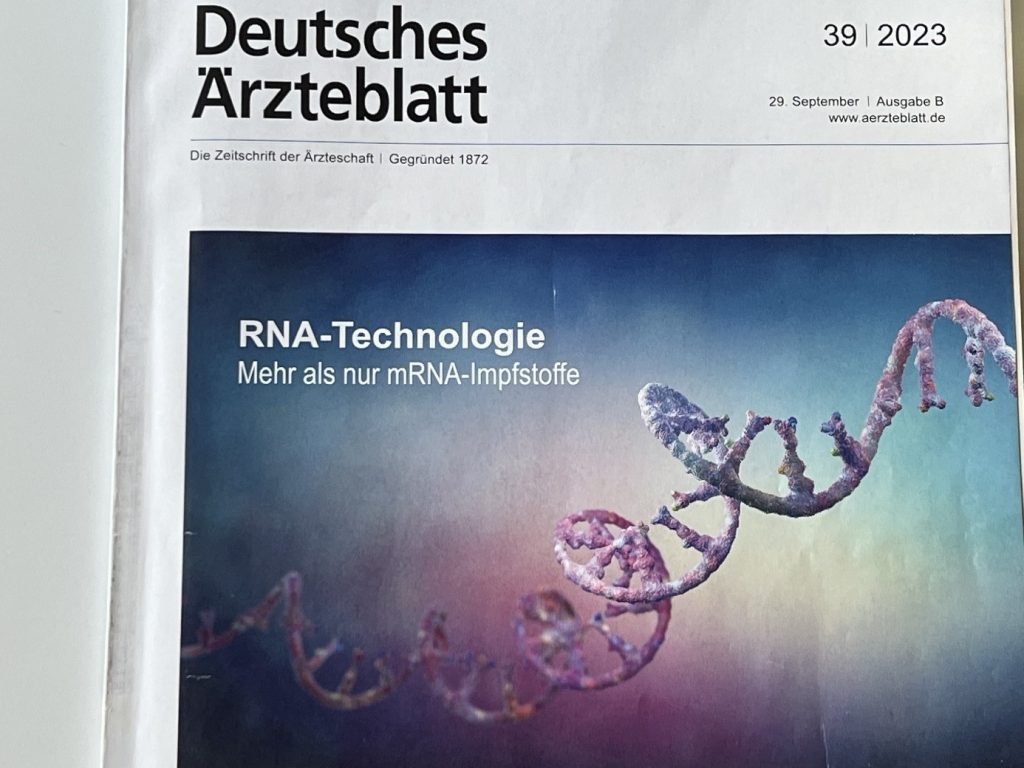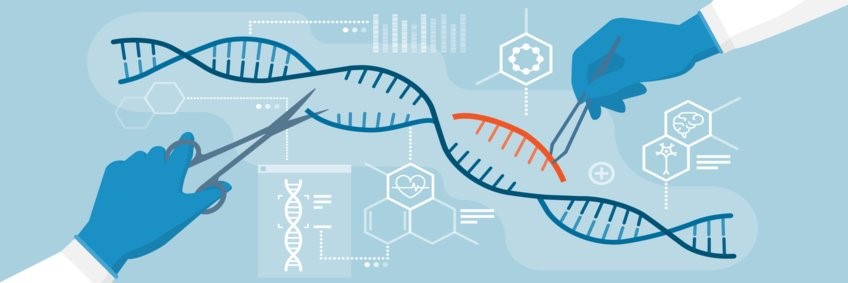National German weekly Journal for Medical Doctors in Germany reports on all the Benefits of RNA Technology only
by
Prof. Dr. Robert Gorter, MD, PhD.
Dany G, Charbel Msc.
December 18th ,2023

On September 29th, 2023, the weekly journal for all registered physicians in Germany (Deutsches Ärzteblatt) received this copy by mail where the main articles are dedicated to all the benefits of mRNA technology. How one will be better and better able to conduct gene manipulation and cut and paste damaged genomes and replace them for editing and improving the genome by synthesizing new sequences. A new breakthrough is taking place, where one will see a completely new form of medicine where practically all diseases, including hereditary diseases and all forms of cancer, can be cured.
It would be a matter of a few decades and mankind could live disease-free thanks to CRISPR (gene cutting and editing) and the development of synthetically manufactured perfect genes.

CRISPR Genome Editing Technology
CRISPR (Clustered Regularly Interspaced Short Palindromic Repeats) genome editing is a revolutionary method in which a programmable RNA targets a nuclease to a specific location in the genome. The speed, simplicity, and precision with which CRISPR technology enables genetic elements to be mutated, silenced, induced, or replaced has resulted in its widespread adoption in the global research community.
Next-generation sequencing (NGS) may be used at various stages of a genome editing workflow, from analyzing CRISPR off-target effects with whole-genome sequencing to confirming CRISPR knockouts and other edits with targeted sequencing. Follow-up studies can then be performed using applications such as methylation analysis and gene expression profiling with RNA sequencing, in order to assess the functional impact of a given gene edit.
Applications of CRISPR Genome Editing
Applications of CRISPR technology have been identified in the fields of basic and clinical research, therapeutics, drug development, agriculture, and the environment. Clinical research has shown potential utilization for CRISPR in such diseases as sickle cell disease, cancer, AIDS, Huntington’s disease, Duchenne muscular dystrophy (DMD), and much more.
CRISPR genome editing allows researchers to create genetically modified cell lines and animal models with speed and precision. In addition to creating gene knockouts and gene knock-ins, researchers can use CRISPR technology to modulate gene expression via interference (CRISPRi) or activation (CRISPRa), without altering the genomic sequence.

Is CRISPR the promise of a disease-free mankind in the near future?
What are the risks of this? Are the risks to the patient? Or to all of us?
One of the biggest risks of CRISPR is what is called gene drive, or genetic drive. What that means is that because one is actually manipulating genes and those genes get incorporated into the genome, into the encyclopedia, basically, that sits within cells, potentially those genes can then be transferred onto other organisms. And once they’re transferred onto other organisms, once they become part of the cycle, then those genes arrive in the environment.
That’s probably the biggest fear of CRISPR. Humans manipulate the genetic code, and those manipulations get passed on generation to generation to generation. We think we know what we’re doing, and we think we’re measuring exactly what changes we’re doing to the genes, but there’s always the possibility that either we miss something or our technology can’t pick up on other changes that have been made that haven’t been directed by us. And the fear then is that those changes lead to antibiotic resistance or other mutations that go out into the population and would be very difficult to control. Basically, it creates incurable diseases or other potential mutations that one would not really have control over.
In the German Medical Journal “Deutsches Ärzteblatt” is full of praise for all the new possibilities of genome manipulation in diseases that were considered incurable. The authors of the various articles do not discuss the huge potential of negative effects and creating new diseases, never known to men before.
One would expect that in a scientific journal, a fair discussion takes place about all the opportunities but also the (unknown) risks